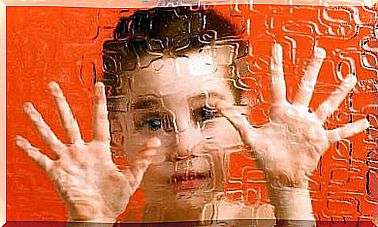What Are Benzodiazepines? Uses And Consequences

Benzodiazepines live on our nightstand and in our bags. They are the pills that help fight the evil of life, the guarantee that insomnia will not strike and that the monsters of anxiety will not awaken, just like the suffering, which is made to disappear as if by magic by these prodigious drugs, but which , at the same time, they are addictive.
In the beautiful film “The Secrets of Osage County”, it is said that women usually solve their problems with pills, while men rely on alcohol. In the film we can see Meryl Streep masterfully reflecting the sad reality of the regular and uncontrolled consumption of benzodiazepines, especially encouraged by some doctors who see in these drugs an easy, fast and cheap solution with which to fight the existential pain of their patients. .
This film is a gory but true example of what many specialists face today: people addicted to a legal drug that is prescribed to them by their doctors, patients who need a higher dose every day to stay healthy. or even elderly people who, for decades, have taken their little “tablet” to sleep and who now see their quality of life completely destroyed.
There are many mysteries surrounding the composition of these hypnosedatives that are meant to make our life easier when difficulties arise, whether they are real or imaginary. Nobody doubts their short-term effectiveness, which is excellent. However, as we all know, the processes of anxiety or depression can be very long and the need to find some relief is far too great. And this is where we find the danger, this is where addiction arises and a symptomatology that needs to be discussed.

What are benzodiazepines?
It is very likely that the word benzodiazepine means nothing to many of you. Despite this, if instead we talk about Orfidal, Tranxilium, Lorazepam, Lexotan, Valium or Alprazolam, then things change. A large part of the population has taken these medicines at least once for a certain reason or knows a relative, friend or work colleague who needs these medicines every day.
Nevertheless… what are benzodiazepines really?
- Benzodiazepines act as sedatives, which means they slow down bodily functions.
- They are psychotropic drugs that act on the central nervous system. This means that their action is not limited to just relaxing or sedating us, but also have anticonvulsant, amnesic and muscle relaxant effects.
- Their functioning focuses on increasing a chemical found in the brain known as GABA (γ-aminobutyric acid).
- GABA is a brain inhibitor produced in the cerebellum, basal ganglia and many areas of the spinal cord. Its purpose is to relax and reduce the activities of neurons.
It is curious to know that benzodiazepines appeared on the pharmaceutical market in the 1960s as a substitute for barbiturates. Since then, and with the birth of the pharmaceutical company ROCHE in 1963, manufacturer of the well-known Valium ( diazepam ), benzodiazepines have now become the most consumed prescription “drugs” in history.
Uses and types of benzodiazepines
Benzodiazepines are used to treat a tendency to suffer from panic or anxiety attacks in general, as well as insomnia, alcohol withdrawal, epilepsy, affective disorders, post-operative pain and even as an aid during the detoxification process from certain drugs.
Just as several studies reveal to us, such as the one conducted by the Faculty of Health Sciences of the San Jorge University of Zaragoza, Spain, benzodiazepines are also increasingly prescribed in nursing homes for the elderly. This is an important finding that prompts experts to question whether the clinical benefits of these drugs actually outweigh their unwanted effects.
On the other hand, it must be emphasized once again that these are medicines that can only be consumed under medical prescription and that, even if they can be used together with antidepressants or antipsychotics, it is always and in any case a specialist who has to prescribe them and have to control them. the dose at any time.

Types of benzodiazepines
Benzodiazepines are classified according to their duration of action within the body. Let’s see in detail what they are.
Long-acting, between 40 and 200 hours.
- Clobazam.
- Chlorazepate.
- Chlordiazepoxide.
- Diazepam.
- Flurazepam.
- Medazepam.
- Pinazepam.
- Clotiazepam.
- Prazepam.
Intermediate duration of action, between 20 and 40 hours.
- Clonazepam.
- Bromazepam.
- Flunitrazepam.
- Nitrazepam.
Short-acting, between 5 and 20 hours.
- Alprazolam.
- Lormetazepam.
- Lorazepam.
- Oxazepam.
With a very short duration of action, between 1 hour and 1 hour and a half.
- Brotizolam.
- Lormetazepam.
Effects associated with benzodiazepines
Benzodiazepines are effective. They never fail, they give us uninterrupted rest, they give relief from that desperate suffering that envelops us after a love breakup and they even help us to make our working days more pleasant. Despite this, everything in this life has a price, and almost as if it were a cruel ancient deity, it sometimes forces us to make a pact. Benzodiazepine treatments should not last longer than 4 or 6 weeks. Otherwise, there are high chances of developing an addiction.
Despite this, life continues to hurt, problems continue to be difficult to solve, insomnia continues to show up every night, and anxiety continues to devour us. At this point, we ask for help from our doctor who, short of any other resources and strategies, gives in and thus starts this slow and devastating addiction.

Common physical side effects of benzodiazepine addiction
- Drowsiness.
- Dizziness.
- Confusion.
- Lack of balance (especially in the case of the elderly).
- Disturbances in speaking.
- Muscle weakness.
- Constipation.
- Nausea.
- Dry mouth.
- Blurred vision.
Progressive effects on memory associated with the consumption of benzodiazepines
Benzodiazepines significantly reduce our ability to remember new information. Furthermore, a prolonged consumption of these drugs causes a clear rigidity of our cognitive processes: it is difficult for us to concentrate, solve problems, deduce certain information, relate ideas …
Paradoxical effect
When we talk about the “paradoxical effect” of a drug, we are referring to the opposite result to that hoped for. There are many patients who, after months or even years of consuming a certain type of benzodiazepine, begin to suffer from some of the following symptoms:
- Increased anxiety.
- Feeling angry or angry.
- Agitation.
- Feeling of melancholy.
- Depersonalization (feeling of indifference towards the environment around us).
- Depression.
- Derealization (feeling of perceiving the environment around us as unreal).
- Hallucinations.
- Nightmares.
- Personality changes.
- Psychosis.
- Restlessness.
- Suicidal thoughts or behaviors.
The consumption of benzodiazepines in people over 60 years of age
Most often, primary care physicians prescribe short-acting benzodiazepines to treat the insomnia of people over the age of 60. This is a very common procedure and aims to improve their quality of sleep, in order to improve their quality of life as well. Despite this, there are many studies that warn us about the many risks associated with prolonged consumption of these drugs in old age:
- Cognitive and memory alterations.
- Increased risk of falls and possible consequences (such as hip fracture).
- An increased likelihood of car accidents.
- The use of benzodiazepines could also be a factor in the onset of dementia.
All of this suggests a very clear conclusion on which we must reflect: the unjustified and long-term use of these drugs must be considered a public health problem.
Laura and the story of a prescribed addiction
Laura is 39 years old, she is the mother of two children aged 8 and 3 and works in a public company. It’s a good job, but it’s under a lot of pressure, has goals to achieve and a brand to bring out on the market. There are days when, for her, balancing everything is very difficult: respecting her tasks as a mother, being a successful creative worker and a woman who tries every day to control that monster that is anxiety.

A few weeks ago they admitted her to the hospital to help her overcome a withdrawal crisis. It all started with a ringing in the ears. He couldn’t focus on anything else, just that tinnitus. Soon after, the tingling in the arms and legs, the burning sensation in the mouth and that horrible sensitivity to light began.
Her mood suddenly changed and it was then that her children started to be afraid of her. At that precise moment, his world was out of tune and life no longer rhyme. Nothing, in his mind, was in its place and Laura just wanted to hide in a small place to disappear, fade, dissolve into nothingness.
When she realized her addiction to benzodiazepines, she couldn’t believe it. It is very difficult to accept that it is possible to develop an addiction to a medicine that is supposed to help us get better. Despite this, the process of anxiety and depression is long and the time of the medical examination very short. In these circumstances, it is sometimes very difficult to control the administration of drugs.
Then, Laura tried to stop using it, only to realize that it was impossible, because the effects are devastating. Life is not a straight road, but a steep and winding climb and that’s why sometimes you need the help of those pills we put under the tongue. The tablets that give relief, that calm and doze off . Still, benzodiazepine addiction is similar to heroin addiction and sometimes we have no choice but to go to a treatment center that specializes in this type of addiction.

A simple but dangerous resource; cheap in the beginning, but expensive in the end
Despite this, we cannot blame the doctors for everything. The organization, the system and the policies that articulate our society do not make it easy for a personalized treatment that would be able to give a more accurate diagnosis and treatment. Furthermore, factors such as unemployment, low quality of working life, crisis, poverty, the feeling of loneliness or the mismanagement of our emotions, often accentuate those gaps in which drugs can act as a help, as enemies of pain. and magical sources of good rest.
To conclude, it is important to point out that benzodiazepines are effective in the short term. In addition to this frontier, where chemistry acts as a sedative, there is the need to integrate other strategies, other points of view thanks to which to solve the intricate plots of our life thanks to psychotherapy, personal will and authentic, sensitive and empathic with the world around us. It is up to us to succeed, certainly not in the effect of any pill.
Bibliography and references
-Andrés-Trelles, F. (1993) Fármacos utilizados en la ansiedad: benzodiacepinas y otros ansiolíticos . Madrid: MacGraw Hill Interamericana.
-Hardman JG, Goodman LS, Gilman A. (1996) Las bases pharmacológicas de la therapéutica. Vol. I. Págs. 385-398. Madrid: MacGraw-Hill Interamericana.
-Robert Whitaker, (2015) Anatomy of an epidemic, Madrid: Capitán Swing
-Eugene Rubin, Charles Zorumski, (2015) How Many People Take Benzodiazepines? Psichology Today https://www.psychologytoday.com/blog/demystifying-psychiatry/201505/how-many-people-take-benzodiazepines









